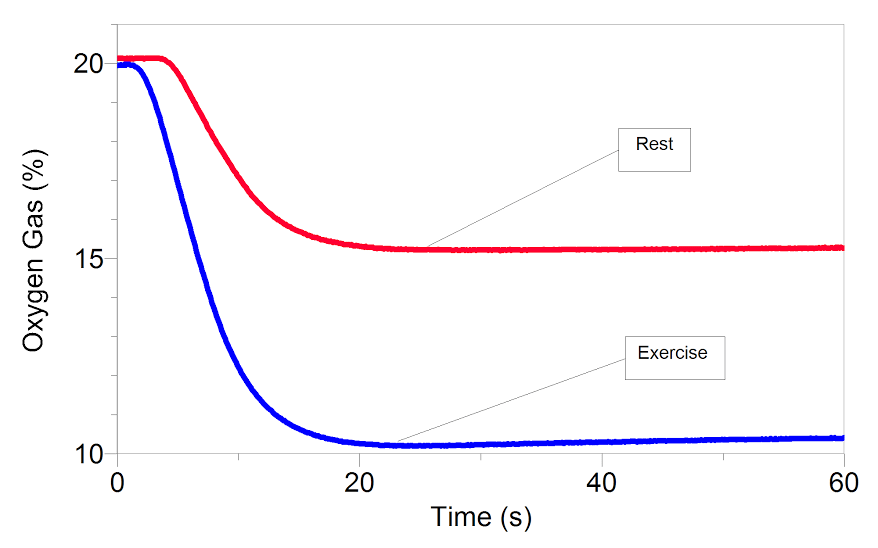We have received many inquiries on how to use Vernier equipment to measure oxygen consumption in humans during exercise. Many instructors ask how to measure VO2 max, the maximum volume of oxygen that a subject can utilize per unit time. Our physiologist has developed a simple activity for measuring oxygen consumption using our O2 Gas Sensor and has found some solutions for estimating VO2 max that only require a heart rate monitor.
To investigate oxygen consumption after exercise, we have modified Experiment 22, “Oxygen and Aerobic Metabolism” from Human Physiology with Vernier. This activity uses an O2 Gas Sensor, Spirometer, and an adapter that connects these two sensors together. During the activity, the subject exhales through the adapter while at rest and again after exercise. The amount of oxygen consumed for each condition is calculated by the students. As shown in the graph, exhaled air after exercise has much less oxygen content than exhaled air at rest. This indicates that a clear increase in oxygen consumption is observed after just three minutes of exercise. If you do not have a Spirometer, a version of this activity is available that only requires the O2 Gas Sensor and our small BioChamber. Both versions of this activity (with and without Spirometer) are available as a download.
To measure oxygen consumption during exercise, such as while running on a treadmill, a research quality metabolic cart or system should be used. Qubit Systems sells an excellent system that can be used for this purpose, called a Q-box, which uses Logger Pro software. Learn more about the Q-Box »
So what about measuring VO2 max? To determine VO2 max directly, oxygen consumption should be measured directly during vigorous exercise for an extended period of time. As a result, most direct measurements of VO2 max require research quality instrumentation and the presence of a trained health care professional to make sure the test is conducted safely.
Luckily, there are many simpler ways to estimate VO2 max. In most tests, a calculation is made from the subject’s heart rate measured after a period of exercise. The three common tests are the George Jog Test, the Cooper Run Test, and the Rockport Walk Test. Instructions on how to complete these tests and others can be found online. Once a protocol is selected, a heart rate monitor is also required. We recommend our Go Wireless Exercise Heart Rate, as it can be used with mobile devices such as iPad, iPhone, LabQuest 2, or Android phones and tablets. Other Vernier heart rate monitors also work.

If you have any questions about this modified activity or other questions about VO2 max or human physiology, feel free to contact physiology@vernier.com
